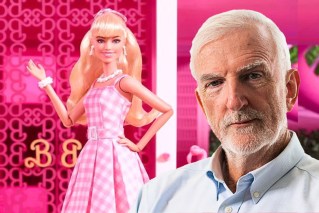Michael Pascoe: RBA on the precipice of its second big mistake


The Reserve Bank has raised interest rates enough, Michael Pascoe writes. Photo: TND
OK, Phil, that’s enough. Put your weapon down before you do yourself – and the economy – harm.
The Reserve Bank Governor’s biggest mistake so far isn’t what he has done with his “blunt instrument” of interest rates, but that wild swing of his only other tool, the Jawbone, when he suggested “the cash rate is very likely to remain at its current level until at least 2024”.
That damaged the RBA’s credibility and will go down in central banking lore as a salutary lesson in how not to provide forward guidance.
It’s impossible to imagine any central banker ever again indicating steady monetary policy three years out. Or two. Or maybe even one.
Tuesday’s 25-point increase in the cash rate has Dr Lowe standing on the edge of another serious mistake, this time with his blunt instrument.
This month’s rise should be the last for the foreseeable future – not that the future is very foreseeable, of course.
Set a record
The speed and extent of this tightening – 300 points since April – is one for the history books.
Having set a record, the RBA needs to chill to find out what it has actually done because, if the central bankers are honest with us, they have very little idea about what whacking an extra 300-points on loans will do in present circumstances.
Indeed, Governor Lowe himself made a strong case that increasing rates perhaps makes things worse when inflation is being primarily driven by supply issues, not demand.
And, as underlined in Dr Lowe’s post-meeting statement on Tuesday, when monetary policy works, it does so with a lag.
How big a lag is something else that nobody knows. Take a guess – six months? A year?
If you believe in a close correlation between domestic monetary policy and inflation, the forecast headline inflation rate of about 8 per cent for the present quarter might be the result of a 0.1 per cent cash rate, not what the new cash rate of 3.1 per cent will deliver.
What we do know at this stage, is that there are good reasons to think a 3.1 per cent cash rate could well be enough.
Inflation drivers trending down
The major international drivers of our inflation are trending down, global economic growth is slowing, the federal government is trying to cap thermal coal and gas prices, there are hopes the La Nina weather pattern will finally take a break early next year and we don’t have the dreaded “wage price spiral”.
The RBA has repeatedly stated that what it is seeing with wage rises is in keeping with what it wants inflation to be.
Of course, the Governor continues to employ the Jawbone in a threatening manner.
“Given the importance of avoiding a prices-wages spiral, the board will continue to pay close attention to both the evolution of labour costs and the price-setting behaviour of firms in the period ahead,” Dr Lowe said in his Tuesday statement.
That translates as: “Continue to play nicely, kiddies, or I’ll whack you.”
For those given to reading RBA tea leaves, the most important sentence in the statement was: “The board expects to increase interest rates further over the period ahead, but it is not on a pre-set course.”
That’s the board expecting further rises like Dr Lowe was expecting rates to be steady for three years. It’s the Jawbone at work.
Adding the phrase, “but it is not on a pre-set course” is a qualifier for those expectations, enough of a prevarication to allow for at least a decent pause in tightening policy.
Rates high enough
Providing too much stimulation is a mistake for the economy. Whacking the economy too hard with the blunt instrument can be worse when the leading indicators are saying “enough”.
AMP Capital’s Shane Oliver also is in the (minority) camp that believes the RBA has tightened rates enough.
“Banks are likely to pass the RBA’s rate hike on in full to their variable rate customers,” he wrote.
“This will take variable mortgage rates to their highest levels since 2012. In other words, roughly 10 years of falling mortgage rates have been reversed in eight months.
“This may not have hit spending much yet, but it will in the months ahead and through next year, particularly as roughly two-thirds of fixed rate mortgage customers reset next year to fixed rates that are more than double current levels.
“The rise in mortgage rates is now well above the 2.5 per cent interest rate serviceability test that applied for borrowers until October last year and is now equal to the 3 per cent that applied from October last year.
“So many recent home borrowers will now be seeing rates above the levels their serviceability was tested at when they took out their loan.”
That’s going to hurt. And, compared with the hard-and-fast 275-point tightening in the early 1990s, Dr Oliver makes another telling point:
“Household debt as a share of income was only 68 per cent back then whereas it’s now 187 per cent, so rates shouldn’t have to go up anywhere near as much as they did in the 1980s to slow spending and hence inflation.”
We saw before COVID struck that cutting interest rates was a weak means of stimulating a soft economy – “pushing on a piece of string” became the compulsory description.
But with such high debt levels, hiking rates is likely to have considerably more effect. Perhaps the “piece of string” line can be replaced with the feeling of “tightening a noose”. You notice that – especially if it’s around your neck.
Enough, Governor.








